My last post, Why haven’t there been any keyboard innovations in decades?, got some interesting responses.
A couple of people said I was ignoring much of the progress in the past decade, citing lots of features added to keyboards like backlit keys, keys with displays built in, wireless, etc. These are all nice features, but they’re convenience features. None of those features make typing more comfortable, or reduce repetitive stress injuries. Features that do those things are ergonomic features, and were the focus of my article.
A few people said standard keyboards were just fine, so no innovation was needed. I suspect those people are still in their twenties, and haven’t realized the effect of typing on their hands yet. Stay with your straight keyboard with membrane switches and then come back and tell us in a few years which ergonomic keyboard you’ve switched to…
ErgoDox
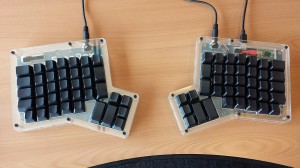
Someone also pointed out that I left out the enthusiast community, pointing out the ErgoDox keyboard and its distribution through MassDrop as an example. Now don’t get me wrong, I love the design work done by individuals and collectively through projects like the ErgoDox. However, when the easiest way to buy a product is to order it in a bundle of electronic parts that require soldering to put together, it’s not a product that most people can use. Hopefully someone will pick up the design and start mass manufacturing the keyboard, bringing down the cost, offering support, etc. making it available to a broader market.
Even so, there is nothing particularly innovative in the design, other than that the design and firmware are all open source and freely available. There are already two part keyboards, the thumb keys layout which looks interesting is almost exactly the same as the Kinesis Advantage keyboard, etc. I like the design, and it’s fairly compact, but personally I’d want one built by a company that would build it in a factory and offer support.
Keyboardio
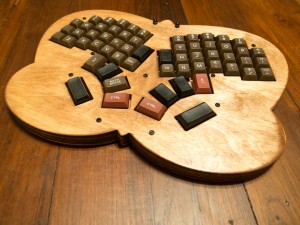
One hobby project which is trying to make the leap to manufactured product is Keyboardio. It started out as a project done in someone’s attic, and is now incorporated and in an incubator in San Francisco. You can see a detailed look at the various prototypes that lead up to the current design on the creator’s personal blog. This is a great example of enthusiast efforts that have the potential to make it into the market. I expect there will be a crowd-funding campaign for this keyboard soon. The design is really nice, although I don’t know what the final material will be for the case. Presumably it will be some form of plastic. If they do a crowd-funding campaign, perhaps wood will be a different tier in the campaign.
The thumb keys design is a little different than I’ve seen before, although I wonder how well that design has been tested. From an ergonomic point of view, the design is somewhat similar to the TEK keyboard (compact design without number pad, non-staggered keys angled toward each hand, space for wrists, etc.).
TREWGrip
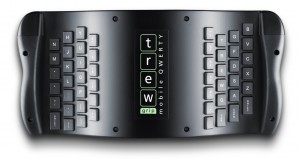
Another interesting project is the TREWGrip. The TREWGrip is a mobile keyboard, intended to be used with mobile phones and tablets, that allows you to retain your QWERTY muscle-memory, but just shift your hands to keys behind the device. The keyboard also contains a gyroscope, allowing it to be used as an air mouse. On the front of the keyboard, you can mount your phone or tablet, and a key map is present that allows each key to light up when you press it on the reverse side.
Back in August TREWGrip launched a Kickstarter campaign, but didn’t reach its goal. However, the company was showing off its keyboard at CES in January, and they were projecting a launch sometime in the second half of 2014. The company wants to target niches like the healthcare industry, allowing doctors to take notes on their mobile device by touch-typing on the rear of their keyboard, so they can keep eye contact with patients, and don’t need to go to a computer to enter the information.
The idea of rear-typing isn’t entirely new – there was the Grippity keyboard under development back in 2008 and research from Microsoft from 2010 – but this might be the first consumer product to make it to market. From an ergonomics point of view, it’s hard to judge this without using it. It is a split keyboard, and your hands might be more naturally positioned than with some keyboards. Your hands are not propped up on a desk, which might be an advantage, although having to hold it all the time could work against it. Interestingly, at CES they were showing a version with mechanical keys. If they are targeting healthcare, however, I suspect they will stick with silicon keys that can be cleaned simply, at least for that market. The price is expected to be somewhere around $250 when it is released.
King’s Assembly
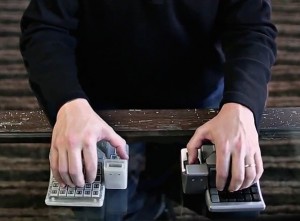
There’s another keyboard that is currently in a Kickstarter campaign – King’s Assembly. Don’t ask me what the name means (it’s a gaming reference). It’s actually a combination keyboard/mouse/joystick, geared towards the gaming community. It is the first keyboard I have seen that the user can actually move on the desk to use as a mouse. Plenty of keyboards have come with built-in trackballs, trackpads, etc. but I’ve never seen one that moves itself. For gaming this seems like a very useful feature, although for productivity use it remains to be seen if it will be useful or will get in the way.
The general design is not so different from an earlier design that made it to Kickstarter, but was not funded, called Talons. Like King’s Assembly, Talons was geared towards gamers. It was also a split keyboard with keys in a very similar position. Unlike the King’s Assembly, the Talons halves didn’t work as a mouse, although they did have a trackball that could be used as a mouse (more or less where the joystick is located in the King’s Assembly).
In contrast to Talons, however, King’s Assembly has already blown past its initial funding goal, and several stretch goals. There are a few interesting things about the campaign. On the one hand, I’m cautious that the small gaps ($25K) between each of the stretch goals will actually be enough to fund each of them. I’m also cautious about what seems like a very aggressive design and production schedule. Being April now, and the design unfinished, it seems highly suspect to me that the ‘pioneer’ level contributors will receive their keyboards on time in July. On the other hand, I’m very impressed at the interaction between contributors and the company in the comments, where the company has been addressing highly technical questions and adapting their product to the needs and desires of their contributors. Some of the stretch goals were formulated through this interaction, and you can follow the company’s changes, such as using Cherry MX switches instead of the Cherry ML switches used in the original prototype. You can tell from the discussion that the company developing the King’s Assembly really understands the issues important to keyboard users, knows the ergonomic and gaming keyboard spaces, and is using that knowledge to develop something that is both new, but also takes into consideration what has worked in the past.
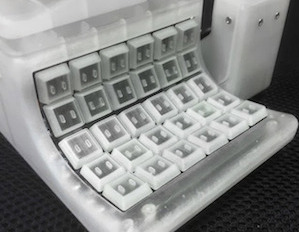
From an ergonomic point of view, the King’s Assembly is still a bit in flux. As mentioned the key switches have changed since the beginning of the Kickstarter campaign. The good thing there is that with the MX switches, the company is offering to allow each customer to choose which color MX switch they want to use in their device. This is a level of customization that is nice to have, since different people like different switches (clicky vs. non-clicky, tactile vs. non-tactile, level of noise, amount of pressure needed to activate, etc.). Each keyboard half will also have adjustable palm rests. A change to a Maltron/Kinesis-style concave key placement is being planned as well (it is part of a stretch goal they should reach in the next day or so). What effect having the keyboard halves move will have on comfort remains to be seen. If you are worrying about moving the mouse when typing and are actively trying to keep the halves still, that could have an negative effect.
Overall, the King’s Assembly is a really interesting example of working with the community to guide your efforts, but still developing it with a professional team. Their Kickstarter campaign is a kind of model of interacting with customers, but of course it remains to be seen if they can deliver on their promises. Hardware Kickstarter-campaigns don’t have the best track record on delivering on time. Some don’t deliver at all (for example this multi-touch keyboard and mouse that tripled its funding goal and still never delivered). Let’s hope King’s Assembly delivers, even if not completely on time.
Some final thoughts
None of the above keyboards are available as commercial products yet. The story behind each keyboard is unique, but what is interesting is how single engineers, or small groups of engineers, have been able to develop new keyboard designs and promote them even before manufacturing them. This kind of promotion, and being able to crowd-fund development based on it, is something that never existed in past decades. Getting validation for one’s designs before beginning manufacturing is an amazing thing, and I’m glad it had spurred some engineers to come up with new and interesting keyboard designs. Hopefully the above designs are just the beginning of a new era of keyboard design.
I’ve come across rumors of a new Kinesis Advantage model that was forthcoming. Of course, I ran into those rumors in past years as well. I wouldn’t expect Kinesis to radically change the ergonomics of the Advantage, but if they did release a new model, one thing they could do is implement some of the convenience features that users have come to expect in keyboards in recent years – features like backlit keys, wireless connectivity, and at the very least a detachable USB cable. Adding some kind of mouse functionality, even a multi-touch touchpad in the middle, would be very useful.
Some of the Advantage Pro’s features are being implemented in keyboards like the King’s Assembly, like driverless-macros and the concave key wells. If Solid Art Labs, the company behind King’s Assembly, can implement all the features of the Advantage Pro keyboard, and include more features like the convenience features mentioned, as well as the mouse and joystick functionality, then presumably they could come out with a keyboard to directly compete with the Advantage Pro as well. The Advantage Pro costs $359. The King’s Assembly is currently going for $200 on Kickstarter, although will probably be closer to $300 when it hits retail. Cut out the mouse functionality as an option and it could probably be cheaper. Kinesis will need to modernize their keyboards, and come up with a good strategy should they suddenly have a direct competitor.
So to answer my somewhat cynical question that titled my last post, perhaps the costs of innovating new products was too high, and now that those costs have come down we’re going to start seeing more and more interesting keyboard designs. I certainly hope so. At the very least, these newcomers should wake up the existing vendors and get them to start updating keyboards that haven’t changed since some startup founders today were in diapers.
If you’re interested in keyboards, there are several enthusiast forums, including Deskthority, geekhack, and /r/MechanicalKeyboards.
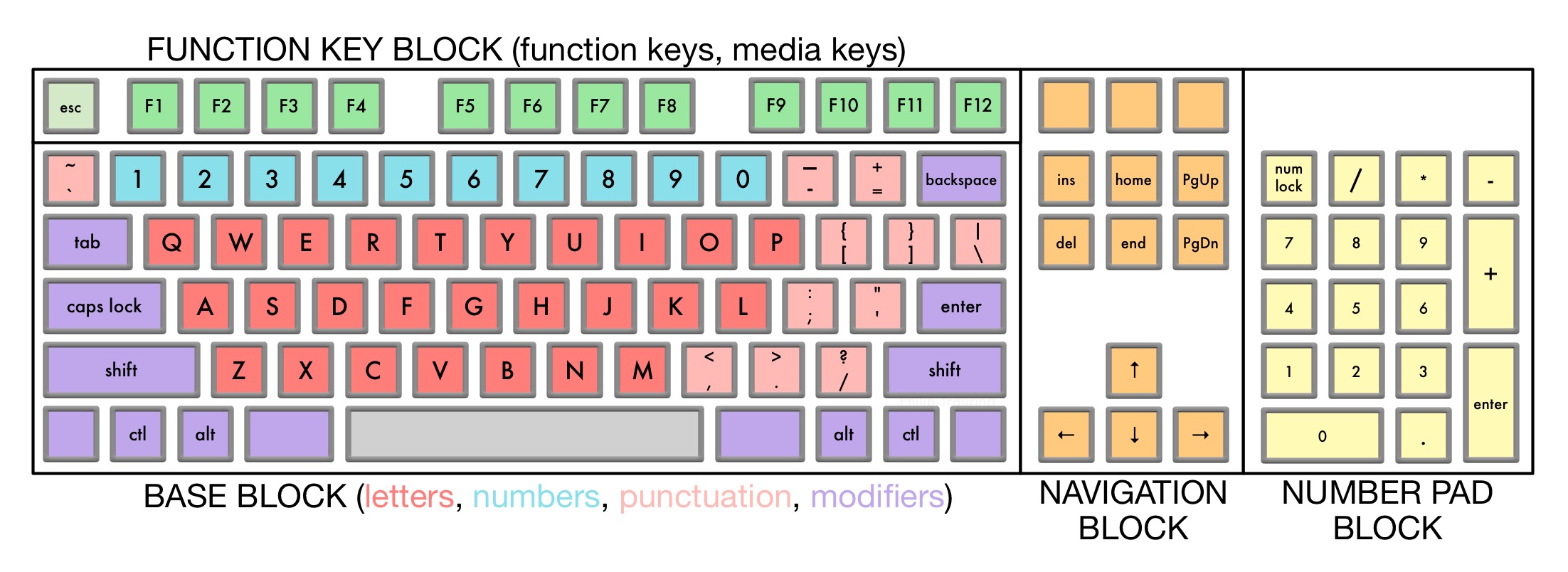
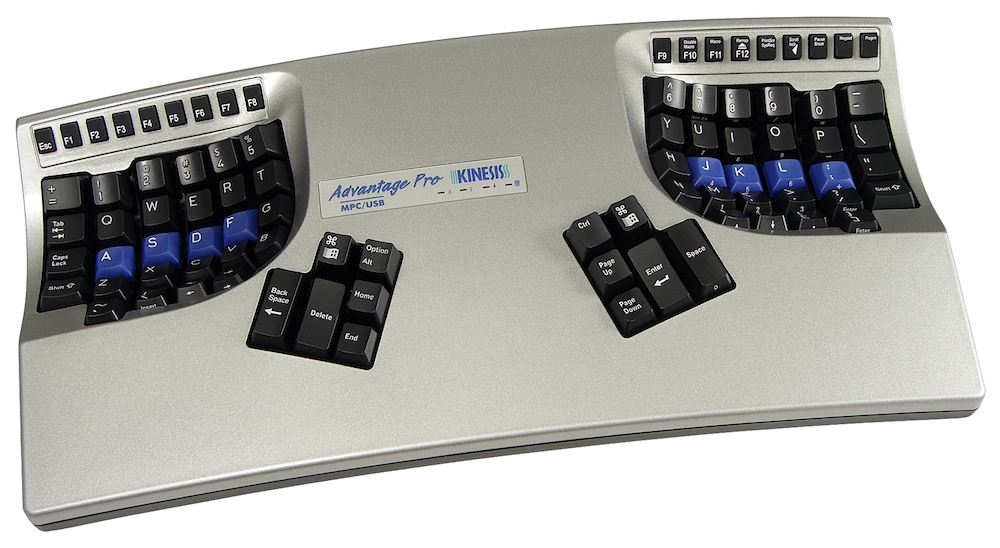
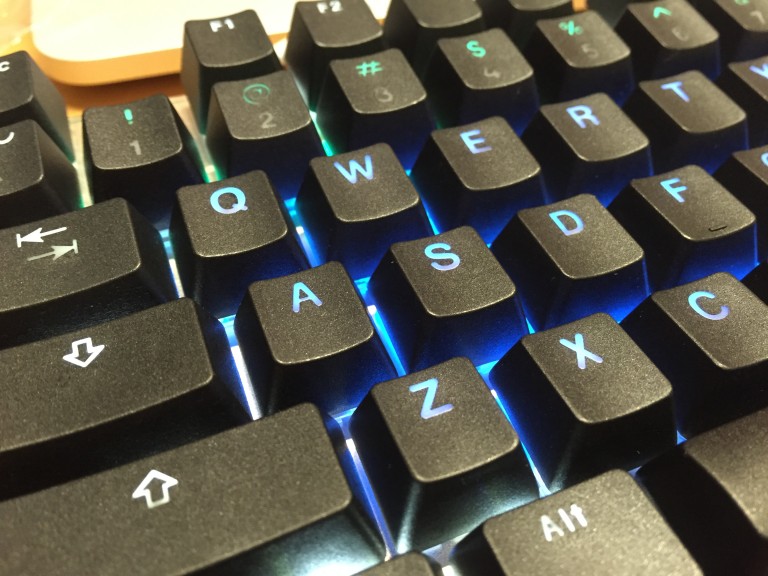
“Even so, there is nothing particularly innovative in the design, other than that the design and firmware are all open source and freely available.”
Certainly not. Ergodox allows your thumbs to access the modifier keys, it is split into two, making it easy on the hands while typing, it is a matrix design—these all are great infusion of hardware ergonomic enablers.
The software is also not bad at all—allowing you to have layers, multiple layers upto whatever you could want. Plus, as you said the programmability makes this a great feature.
The only thing that I would hold against it is, as you said, the time consuming assembly process
My point was that none of those features were introduced by ErgoDox. They were not the first to position the thumb keys that way, nor the first to split the keyboard, nor the first to lay out the keys in a matrix. Having read people’s descriptions in the forums of the build process, I would say that even after the physical build, getting the software working properly was an even bigger challenge. I think the ErgoDox is important, but not practical at all for most people (even die-hard makers). Perhaps more importantly it has inspired other keyboards like the Keyboardio, which share a lot of the features, but will be mass-produced and is much more polished.
Pingback: The rise of hardware startups – thank you crowdfunding - off on a tangent
Pingback: The evolution and commercialization of the ErgoDox keyboard - off on a tangent
Pingback: How many keys are there on a keyboard? - off on a tangent
Pingback: Crowdfunding hardware and Sous Vide cooking - off on a tangent
Pingback: Three delayed keyboards (or four future keyboards) - off on a tangent